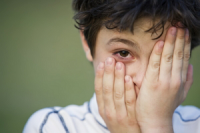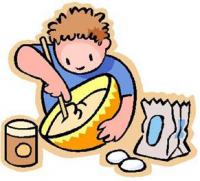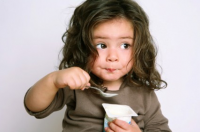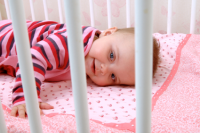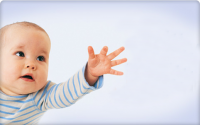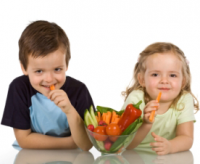Child Health Care Tips Here you will find a health care tips for child that will be useful, beneficial, and most importantly give you and your children peace of mind. * Baby Massage : Baby massage is a good old tradition of nurturing the infants, followed by people since centuries. Take few drops of olive oil in your palm and apply it in the circular motion. But be careful your child body is delicate so do not give pressure to your hands while massaging. * Growing Teeth : Make small pieces of potato and cool them in your fridge. Give you child pieces of cold potato and tell him to place them inside his mouth on the tooth that is paining. The cold will sooth the pain. This works well with cucumber too. Find Doctor. * Skin Care : Your baby could suffer from various skin problems if you do not provide proper protection to the baby skin. Use products that are especially for soft and sensitive baby skin. Apply soft and gentle soap and shampoos which does not contains hard chemicals & use only branded products. Baby’s skin absorbs lotion easily so avoid strong moisturizers. According to season you should use body lotion (mild) cream for baby skin. * Bath Time : Before you take your baby for bath, get everything that you need at one place. Never leave your baby alone in water. Use only gentle baby soap. A soft towel or cloth should be used to dry your baby. Sponge bath is more suitable for newborn babies as their skin is very delicate. * Leg Bicycling : Just keep your baby on his back and firmly hold his legs in a half bent position. Next, start moving his legs in a manner, as if he is paddling a bicycle. See that you do it gently. Maintain a steady pace, neither do it too fast, nor make it too slow. This will help in controlling your baby constipation. * Cold Treatment : Use a cool mist humidifier in your infants bedroom. A humidifier adds moisture to the air, which helps ease your baby’s congestion and cough. Use water only. Do not add any oils or medicines to the humidifier unless directed by your pediatrician. * Fever Cure : Take a dry cloth, dip it into the vessel making it completely wet and drain out the excess water. Place it on the baby’s forehead for two minutes and repeat the process. You should be doing this three to four times in a day for at least 20 to 25 minutes. This will help lower the temperature to a great extent. * Earache : Oils can be very soothing to an inflamed eardrum. Place a few drops of olive oil, castor oil or mineral oil into your child’s ear. You can also gently warm the oil first, but be very careful not to make it too hot because that could damage the eardrum.
Storing Breast Milk Tips There are bags that are specially made to store expressed breast milk. You can use small disposable bottle bags or small glass or plastic bottles as well. Depending on how soon you want to use the expressed milk, you can either refrigerate or freeze it. Here are a few tips to follow: * Fresh expressed milk can be stored for ten hours at room temperature. Milk brought to room temperature after refrigerating or freezing must be used within half an hour. * Fresh expressed milk can be refrigerated for anything between five to seven days. Taste the milk to find out whether it is fresh, before giving it to your baby. * You can store freshly expressed milk for up to six months in an average freezer, depending on the efficiency of the freezer. * Make sure you store in the coldest part of the freezer and away from the door. * Pumped milk that has been refrigerated for less than 48 hours can be frozen. If refrigerated for more that 48 hours, it should not be frozen. * Freezing causes breast milk to expand. While filling bottles or bags, leave about one inch from the top, so that there is place to accommodate this expansion. If you are using a disposable bag, fold the top and fasten it with a rubber band. * Milk containers should be labeled with the time and date on which it was expressed. * If you can express large quantities of milk, do not store it in a big bottle or bag. Use small bags or bottles. The baby will need only small quantities at a time and you can defreeze one small bag or bottle each time. Thus, wastage will be minimized. * If you want to transport stored breast milk to use away from home, keep it cold till you use it. Use a cooler with ice or frozen packs to keep the milk cold, while transporting it. * The oldest milk should be used first.
Common Heart Problems in Children Two common congenital heart diseases are atrial septal defect and ventricular septal defect. In atrial septal defect, there is a hole between the two atria of the heart. In ventricular septal defect, there is a hole between the two ventricles. These holes cause oxygenated blood to move from the left side of the heart to the right side and then to the lungs. * This can lead to accumulation of blood in the lungs and heart failure if the hole is big. If the hole is small, a child may experience no symptoms. Despite this fact, the Cincinnati Children's Heart Institute advises that children with small holes in the heart should be monitored by a cardiologist. * Some children are born with heart problems like pulmonary valvular stenosis and coarctation the the aorta. These conditions obstruct the flow of blood through the heart. Normally blood flows from the right ventricle into the lungs through the pulmonary artery. There is a valve between the right ventricle and pulmonary artery. When this valve is stenosed, or narrow, blood isn't able to move freely to the lungs. * This condition is known as pulmonary valvular stenosis, and it can lead to low blood oxygen levels, along with fatigue. The aorta supplies oxygenated blood to every part of the body. In coarctation of the aorta, part of the aorta is narrow, which prevents free blood flow. It can also lead to low oxygen in the blood. * Children acquire heart diseases due to factors like infection and for also unknown reasons. Kawasaki disease and rheumatic fever are the two major causes of acquired heart disease in children living in the United States, notes the American Heart Association. The cause of Kawasaki disease is unknown, but it typically affects children younger than five years and occurs more frequently in boys. * It causes inflammation of the heart and damages the coronary arteries and heart valves. Kawasaki disease can lead to a heart attack. Rheumatic heart disease is caused by a throat infection and leads to damaged heart valves. It usually occurs in children between five and 15 years old.
Healthy After School Snacks If your kids are participating in a qualifying program at their school, then they are receiving snacks that adhere to these guidelines.Healthy snacking not only satisfies hunger between meals, it can improve concentration during homework or extracurricular activities, and prevent overeating at meal time. * Mini bagels with cream cheese and sliced cucumbers * Hummus dip with pita, crackers or veggies * Sliced avocados with wheat crackers * Celery filled with cream cheese, Boursin cheese, or peanut butter * Edamame in the shell, sprinkled lightly with sea salt * Chickpeas or other beans, eaten with fingers or toothpicks * Olives, pickles, canned artichokes or hearts of palm * Fruit Kabobs (Cut fruit on a stick and dipped in vanilla yogurt) * Smoothies: combine fresh and/or frozen fruit, fruit juice and yogurt or soy milk * Dried fruit such as mango, apricots, raisins, plums * Ice cream cone or waffle bowl filled with yogurt and chopped fruit
Concentration is Good Meditation For Kids (ఏకాగ్రతే పిల్లలకి చక్కటి మెడిటేషన్ ) Concentration Meditation Kids, Concentration Meditation, Best Meditation Techniques Children, Children Meditation: బాల్యం అంటేనే ఒకలాంటి చాపల్యాని స్ఫురింపజేస్తుంది. కన్పించే వాటన్నింటి అంతు చూడాలన్న ఆత్రుత కుతూహలం వారిని ఒక విషయంపై దృష్టి కేంద్రీకరించనీయవు. కానీ స్కూల్లో చేరి, పాఠాలు చదువుకోవడం మొదలెట్టినా పిల్లలు ఏకాగ్రతను అలవరచుకోక పోవడం పెద్దలను బాధిస్తూనే ఉంటుంది. ఆరేడేళ్ళ పిల్లల గురించి పాఠశాలలో టీచర్లు, ఇంట్లో తల్లిదండ్రులు తరచూ చేసే ఫిర్యాదు ఎక్కడా క్షణం కుదురుగా కూర్చోడు, పది నిముషాలైన పుస్తకం పట్టుకొని చదవడు అని. * ఏకాగ్రతతో దృష్టిని నిలపడం నిజానికి పిల్లలకు చాలా కష్టమైన పనే. కొంతమందికి స్వతహాగా ఉంటే, కొంతమందికి పెద్దల భయంతో బలవంతాన అలవర్చుకుంటారు. అలా కాకుండా పిల్లలు ఇబ్బంది పడకుండా వారికీ అలవాటయ్యేలా చెయ్యాలంటే పెద్దలు కాస్త శ్రమపడాల్సి ఉంటుంది. * బాబు గానీ, పాపా కానీ ఏదైనా ఒక పనిలో లీనమవడం పెద్దలు గమనిస్తే వాళ్ళను డిస్టర్బ్ చేయకుండా కొనసాగనివ్వాలి. * వారి ధ్యాస మళ్లించే ప్రయత్నాలేవీ చేయకూడదు. * వాళ్ళు చెప్పిన పనిని మెచ్చుకుంటూ దానిని ఇంకా కొనసాగించేలా ప్రోత్సహించాలి. * వాళ్ళ పక్కనే మీరూ నిలబడి సహాయపడటమో, మరో పని చేస్తూనో వారిని గమనిస్తుండాలి. మధ్య మధ్యలో ప్రశంసలు, చిన్న సూచనలు ఇవ్వచ్చు. ఇలా చేయడం వల్ల మీరున్నంతసేపో అ పని చేసి ఒక పనిపై ఎక్కువ సమయం గడిపినవరవుతారు. పిల్లలకు ఇదే క్రమేపి ఏకాగ్రత పెరగడానికి దోహదం చేస్తుంది. * పిల్లలు చేయాల్సిన పనులను వారికి ఆసక్తికరంగా ఉండేలా మార్చండి. ఈ రోజు ఇంగ్లీష్ పాఠం పూర్తిగా రెండు సార్లు చదివితే కథ చెప్తానని, తెలుగు హోం వర్క్ నీట్ గా రాస్తే పాట నేర్పుతానని- ఇలా వర్క్ ఆసక్తి కలిగే విషయాలను చెప్పాలి. పాఠమంతా చదివాక ఫలానా పదం ఎన్నో లైనులో ఉందో చూసి చెప్పు. ఈ పదం స్పెల్లింగ్ నేను చెప్తాను కరేక్టేనేమో నువ్వు చూడు... ఇలా చిన్న చిన్న ఆటలు, మాటలతో వారు ఎక్కువసేపు ఇక పనిలో కొనసాగేలా చేయవచ్చు. అయితే రోజూ కొంచెం చొప్పున సమయం పెంచుకుంటూ వెళ్ళాలి. కానీ ఒకే రోజు గంటసేపు కుర్చోబెట్టకూడదు. * పిల్లలు ఎక్కువగా ఇష్టపడేది కార్టూన్ ఛానల్ చూడడం. వారిని రోజులో కొంత సమయం వారికి నచ్చిన ఛానల్ ని చూడనివ్వడం.దాని వాళ్ళ పిల్లలో కొంచెం స్ట్రెస్ తగ్గుతుంది. * హాలిడేస్ లో వారికీ నచ్చిన ప్రదేశానికి, ఆట స్థలాల్ని తీసుకెళ్ళాలి. * మొత్తం చదువుపైననే కాకుండా వారికీ అన్ని ఆటలు నేర్పించాలి. * పిల్లలకి పెట్టే ఆహారపదార్థాల విషయంలో చాలా జాగ్రతాలు తీసుకోవాలి. వారికి ఇష్టంలేని పదార్థాలు లంచ్ బాక్స్ లో పెట్టడం వల్ల పిల్లలు సరిగా తినరు. ఖాళీ కడుపుతో ఉంటే టీచర్లు చెప్పే పాఠాలు బుర్రకెక్కవు. * పిల్లలకి ఎక్కువ మార్కులు వచ్చినప్పుడు మెచ్చుకోవడం తక్కువ మార్కులు వచ్చినప్పుడు తిట్టడం లాంటివి చేయకూడదు. తక్కువ మార్కులు వచ్చినప్పుడు వారికి చదువుపై శ్రద్ధ పెరిగే విధంగా మసలుకోవాలి. నమ్రతగా వారికి నచ్చ చెప్పాలి. * ఇలా పిల్లల్లో ఏకాగ్రత పెరిగే విధంగా తల్లిదండ్రులు చిన్న చిన్న సూచనలు పాటిస్తే సరిపోతుంది. అదే వారి బంగారు భవిష్యత్తుకు చక్కటి బాట వేస్తుంది. పిల్లల్లో ఏకాగ్రత పెంచితే చాలు అదే మంచి మెడిటేషన్.
Cell Phone Problems in Children Cell Phone Problems Children, Children Cell Behavioral Problems, Cell Phone Problems Kids, Children's Health and Cell Phones.
Food Allergies in Children Food allergy refers to an abnormal reaction of body towards a certain food. Food allergies in children are most often seen under the age of four. Some of the common allergy rendering foods are. • Fish • Eggs • Milk • Nuts • Tomatoes • Citrus Fruits
Baby Crib Safety Tips There are only a few basic safety measures that are to be followed to ensure a safe and comfortable sleep for your baby. * Check the bedding on the crib. The sheet should have a smoothed, firm fit. Use only sheets for bedding, even though bumper pads are adorable, they are not recommended for baby crib safety. Loose fitting bumper pads attached only by the ends allow a baby’s head to get between the pads and the rails. * Place the baby on his/her back in a crib with a firm tight-fitting mattress. Avoid putting pillows, quilts, comforters or pillow-like stuffed toys in the crib. Use only fitted bottom sheet, specially made for crib use. * Use a sleeper instead of a blanket. Sleeper will keep the baby safe and comfortable. If at all you use a blanket, cover the baby from foot to chest only. This will not suffocate the baby. Cover the sides of the crib with a thin blanket. * Remove all the objects from a baby’s crib. Place a baby mobile phone for them to play with. This will help them keep busy and not looking for any other toys. Remove even any extra diapers or wipes kept at the end of the crib. It may not look dangerous, but it is better to be safe. * There should not be much gap between the crib slats, so that a baby’s body cannot fit through the slats. There should also not be any missing or cracked slats. The corners should be 1/16th inch high so that a baby’s clothes do not get trapped. For mesh-sided cribs, look for mesh less than ¼ inches in size. Mesh should not be torn, or with holes or loose threads. Mesh should also be attached to the top rail and floor plate properly. * Check the railings and the drop-side of the cribs. The railings should be checked properly, irrespective of the crib being old or new. It is mandatory for the crib’s safety. Rails on a used baby crib should be checked for stability. * Latch properly the drop down side of the crib and then use pressure and check that it doesn’t come down on its own. Then, check for loose screws and latches. Tighten them if required. * Cribs that are assembled wrong, or have missing screws or broken latches or any other hardware can lead to suffocation or entrapment. Infants can strangle themselves when their head and neck gets entrapped in the gaps. Make sure there are no missing hardware, screws, slats or mesh in the crib. The crib should just be intact for the safety of the kid.
Dental Care for Children Get information on basic dental care kids dental treatment,children dental care tips, child dental care health and more..
Baby Acne Treatment Tips Baby Acne Treatment Tips, Baby Acne Treatment, Acne Baby Treatment: Acne is stressful as it is in our younger years and even more so when you’re an adult. Now you have a baby and not only does your face break out like a little girls again, but you have to deal with it on you’re baby’s skin too. Treatment For Baby Acne * Always use a mild baby soap on the acnes and do not rub the skin much, make sure your own hands are clean enough before you treat your baby’s face and have a clean towel to pat it dry in order to reduce further complications. * To ease out your baby’s discomfort, dress him/her up in cool, comfortable cotton clothes that are not harsh against your baby’s skin. Use soft natural detergents to wash their clothes. * Do not use any lotions or creams on the acne site, as it will exacerbate the condition and make it difficult for the toddler or you to deal with it. * Take advice from your dermatologist about using some diluted vinegar solution on the face of your baby. It is known to have some curable properties and can be helpful to treat your baby’s rashes. * Remember, never expose your babies to direct sunrays as it will harm them and may cause the skin to inflame further. * Overall hygiene is crucial to your baby’s health. Dirty and unhygienic conditions will only add to your bundle of worries. Keep your baby’s body clean and germ free. * Just keeping our babies in hygienic condition is not enough. Remember to wipe your baby’s face with clean cotton wipes after every few hours. Also, regularly apply prescribed medication to the affected areas to heal the acnes as soon as possible.
Malaria Symptoms and Treatment in Children Malaria is one of the most common diseases to be found in children below five years of age. Malaria is a mosquito-borne parasitic infection generally characterized by fever, chills, and sweating. Malaria parasites contain the capacity to inflate in a short time thereby posing a risk of epidemic. Symptoms * Babies suffering from malaria will show sudden behavioral changes like irritability, lethargy, drowsiness, loss of appetite and aversion towards food. * Your baby is likely to get fever when suffering from malaria. In certain cases, the fever can rise with time while in some infants, the fever can shoot up immediately and go as high as 105 degrees. * When you baby is down with malaria, he will show flu-like symptoms like chills, sweating, headache and muscle aches. * You baby may also show some rare symptoms of nausea, vomiting and diarrhea when suffering from malaria. If malaria affects your baby’s brain, it might lead to serious and aggressive symptoms like seizures, convulsions and unconsciousness. * You baby might pass less urine or even suffer kidney damage or kidney failure if malaria affects the kidneys. Treatment * Malaria can at times lead to severe complications. Therefore, prompt diagnosis and treatment is required to fight it. Anti-malarial medicines such as chloroquine or quinine, given by mouth, by injection, or intravenously (into the veins) are used to treat malaria. * The type of medicine prescribed, and the term of your treatment, will rest on a number of factors like the type of malaria, whether you are pregnant, your age, the place where you were infected and the severity of the symptoms. * Doctors usually look out for signs of dehydration, convulsions, anemia, and other complications that can affect the brain, kidneys, or spleen in the patient. * Babies suffering from malaria should to be kept on fluids, blood transfusions, and breathing assistance.
Baby Teething Fever Babies generally do not have very high fever and the body temperature goes to a maximum of 100 degree Fahrenheit. In case it is more than that, parents should consult pediatricians for any medication advice. Symptoms * Fussiness is the initial and the main characteristic of fever from teething, as baby’s mouth is painful due to sharp little tooth rising from the surface of the gums leading to soreness and discomfort. * Drooling is caused by stimulation of teeth in the mouth and it can be excessive sometimes so better pile a full lot of handkerchiefs around you! * Fever is the most recognizable symptom of teething fever as it is a general indication to bulging out of teeth. The fever can be low or a bit high, in case of high fever, consult a pediatrician for prescription of medicines. * Diarrhea, running nose, lesser sleep, knowing, biting are common symptoms for teething fever in babies. Treatment * As the gums are painful and swollen, it is advisable to rub little pieces of ice on the gums which will help to relieve the pain and swelling. * You can also gently rub frozen cloth or cold spoons on the gums of baby to soothe the pain relieving the heat in the body. This will also bring the fever down. * With a prior consultation from pediatrician, take some gel or paste for gums and rub on the gums, with its disinfectant properties, it will kill the germs in the mouth and make your baby a little more less feverish. * Getting a normal body temperature is purely natural, if the degree of fever is normal to 100 degrees. In case the temperature is above 100 degrees, you can keep some cold water cotton straps on the forehead of the baby. Try not to give medicines to babies and if required, consult a pediatrician for the same.
Bedtime Routines for Babies Bedtime Routine Baby, Bedtime Routine Babies, Baby Sleep Bedtime Routines: A routine will also make your work easier, but for that you need to keep repeating the same routine everyday till the time your baby gets used to it and no more require your help. The sooner the better, start moulding your baby’s day into a routine from when they are 6-8 weeks old, so that they get used to it and follow it as they grow up. * Send Them To Bed Clean Getting ready for bed routine can also include washing your baby’s face, wiping or brushing gums and teeth, changing his/her diaper other things like that. Send him/her to bed clean, so that he/she feels fresh and ready to doze off. It is important to develop the habit of brushing before going to bed at a young age, so that they get used to it as they grow up. * Give Them A Soak One of the most popular methods to get your baby follow a bedtime routine is by giving him/her a warm bath. Having a bath just before going to bed is quite soothing and relaxing. Make your baby sit in warm water and clean them up. This will ease them up and make it easy for them to get a good sleep. Bath is also a good way to spend some special time with your baby. If your baby doesn’t like having a bath, dont force it upon him/her. * Don’t Get Upset It may so happen that you try all the tactics to put your baby into a sleeping routine and they may not get used to it. Do not get boggled or impatient if something like this happens, as it is quite common and the kids take their own sweet time to fit into a routine. * Feed Them Another way of getting your baby into a full sleep routine is by sending him/her to bed with full stomach. Feed them just before sleeping. This will help them sleep properly and will let others in the house to sleep peacefully as well. * Let The Energy Drown It is better to allow babies to exhaust any pent-up energy out before going to sleep. So feel free to dance with them, play with them and let them bounce in a bouncer. All these activities will help your baby get exhausted completely, which will put him/her to a sound sleep easily. * Chat With Them You can even chat with your kids before sending them to bed. It is the best time also for the parents and kids to bond along well. Just speak to them about the entire day. No need to wait till your child is big enough to speak; you can chat with infants as well. * Sing A Song You can even sing a song for your baby. It can be any song and not just a lullaby. A slow soothing melody from you can put things on track. It can relax your baby and put them in a calm state. It can also be a signal for them that it’s time to sleep. * Play Some Music A soft slow music can ease the transition of your baby from a tiring day to a good night sleep. Play soft music or any other machine making soft noises that may soothe your baby. * Play With Them Playing a quiet game with your baby in the room is a good way to spend some quality time with your baby. You can play any game that your baby enjoys, but not the one that gets them too excited. Playing a game will extract the left over energy in them and will give them a sound sleep. * Say Goodnight Moon Many babies like roaming about the entire house and wishing goodnight to all the members and their favorite toys and belongingness. It can be added on to the normal routine as a daily ritual, if your baby is pleased at the end of it and goes to bed with a smile. * Read A Bedtime Story Another common and all time ritual is to read your kids a bedtime story. This will not only put them to sleep but will also help them to recognize and relate with words. It is an educative way to put your baby to a sleeping routine.
Tips for Bathing Babies Tips Bathing Babies, Safety Tips Bathing Babies, Bathing Baby Safely: Children who start crawling and walking need daily baths and more frequent washings because they can easily mess themselves up. Here are some tips for bathing babies while both you and your baby have fun. * Bathe the baby in a room, which is warm and draft-free. * Keep a basin of water nearby and a thick towel on which you can place the baby immediately after you have bathed her. * While giving sponge bath to the baby, if your baby cries too much on being undressed, you may wash one body part at a time and * keep some part of her body covered at all times. * Always test the temperature of the water on your wrist. It should neither be too hot nor too cold. * Slowly, ease your infant into the water in a good baby bathtub or the kitchen sink. * If you feel that your hands get too slippery on the skin once you have scrubbed her with the soap, then you may try wearing a pair of old cotton gloves. * Put a towel on the bottom of the sink or tub to prevent the baby from slipping. * Use mild soaps only for baby’s tender skin and wash the body gently. * Do not use soap on baby’s face as it can hurt her eyes. * If your baby doesn’t like being alone in the water, you can climb into the bathtub with the baby and bathe with her. It gives you great skin-to-skin contact time. If your baby is breastfeeding, you baby may even want to nurse in the tub. * Bath toys such as classic rubber ducks can attract older children bathtubs. * If your child is afraid of bathtubs, you may try taking shower with your baby.
Children Healthy Nutrition Healthy Meals Children, Children Healthy Nutrition, Balanced Diet Children: Good nutrition and a balanced diet help kids grow up healthy. Here's how to improve nutrition and encourage smart eating habits. * Ketchup Usually you might get worried with the fact that your kid eats everything with sauce. Let them continue eating ketchup as it contains a natural cancer fighting compound called lycopene. * Kiwifruit This has more vitamin C than orange. It is rich in fibers and antioxidants that help protect the body’s cells from getting damaged. * Orange Juice Out of all the natural juices, orange juice is the most nutritious. It contains lots of vitamin C, foliate and potassium. The calcium, fortified one is the best for kids who don’t want to drink milk. * Sweet Potatoes Slice it into strips, use little oil and bake into fries which will be serving all the vitamin A that a kid requires in a day. * Whole Wheat Bread It is rich in fiber. Start with wheat bread first. When your kids transform into toddlers, get them used to whole wheat bread. Other such options may be brown rice, whole wheat muffins etc. * Tortillas These are low in fat. Roll them up with ham or turkey, slice into wheels, cut them into wedges, and then bake to make low-fat chips. You can also top with chopped vegetables and melted cheese. * Cantaloupe It is one of the rare fruits containing both beta carotene and vitamin C. It is a great substitute for kids who are not vegetable eaters. * Peanut Butter Peanut butter has become very popular among kids. It is rich in protein and a good source of fiber. Spread on bread or thin with water to make a tasty dip for your toddler. * Parmesan Cheese Each serve of this grated cheese provide close to 10% of daily requirement of calcium. You can sprinkle it on top of pastas, pizzas, vegetables, salads and eggs. * Yogurt 8 ounces of yogurt provides around 250 to 450 milligrams of calcium. While purchasing, look for ones that are low in fat. These beneficiary bacteria in yoghurt boost the health of your child’s intestine.
Healthy Diet for Toddlers Healthy Diet Toddlers, Healthy Meals Toddler, Healthy Nutrition Toddlers: A look at the nutritional requirements for growing toddlers. * Chocolate Milk Milk is an important part of a kid’s diet. Milk provides calcium and vitamin D to build strong bones. Children will gulp down plain milk without any complain, but it is better to add in some flavor to make it appealing and not boring. Why chocolate? Because there is a popular belief that chocolate does not hinder calcium absorption. * Baked Potatoes Baked potatoes are rich in potassium and fiber. It is any day better than greasy and oily fries. It is lower in fat than any other form of potatoes. * Baby Carrots For babies and toddlers, steam the carrots until soft and then cut them into small pieces and feed them. * American Cheese One slice of this cheese has about 125 milligram of bone building calcium. Children between 1 to 3 yrs need 500 ml a day while 4 to 8 yrs old need 800 ml a day. * Cereals Fortified cereals are another rich source of numerous vitamins and minerals, including iron and vitamin B, which build blood cells. There are two brands of cereals: ones with less sugar content and ones with normal sugar content. You can choose depending upon your baby’s taste. * Broccoli Broccolis are rich in vitamin A and C and with every bite, your child will get healthier and stronger. Many kids like it raw or lightly steamed. You can use the vegetables in other dishes as well. * Eggs Eggs are packed with protein and vitamin D. They help in building muscles and provide calcium to the body. So an egg a day will complete your kid’s diet requirement. * Mixed Vegetables Mixed vegetables include a combination of different vegetables with different vitamins and proteins which the body requires on a daily basis. Peas for e.g., provide proteins and foliate and vitamin B. Green beans on the other hand provide potassium. You can either serve them all together in a bowl or toss them all in a soup. * Beef If you are comfortable with non-vegetarian food then beef is the best food to feed your kid. It is a rich source of protein, iron and zinc. But choose beef which is at least 90% lean to keep fat consumption on check.
Newborn Baby Temperature Temperature for Newborns, Temperature Newborn Baby, Newborn Baby Temperature: The importance of maintaining the temperature of the newborn baby has been known for centuries. You should take your baby's temperature. * He is acting especially crabby * His skin feels hot * You note a rash on his skin * He is sweating a lot * His skin looks very pale * His skin looks very flushed * His breathing seems too fast, slow, or noisy * He has nasal discharge * He is sneezing or coughing * He refuses to eat * He pulls at his ears * He is thrashing around * His cry is unusually intense * He is throwing up * He has diarrhea or an unusual stool If you think that the baby might just have been overdressed or over heated, take some clothes off the baby, wait half an hour and retake the temperature. Conversely, if your baby feels cool to the touch or has a temperature of less than 97.6 Fahrenheit, warm him up with an extra layer of clothes or put him skin to skin with you until he warms up.







